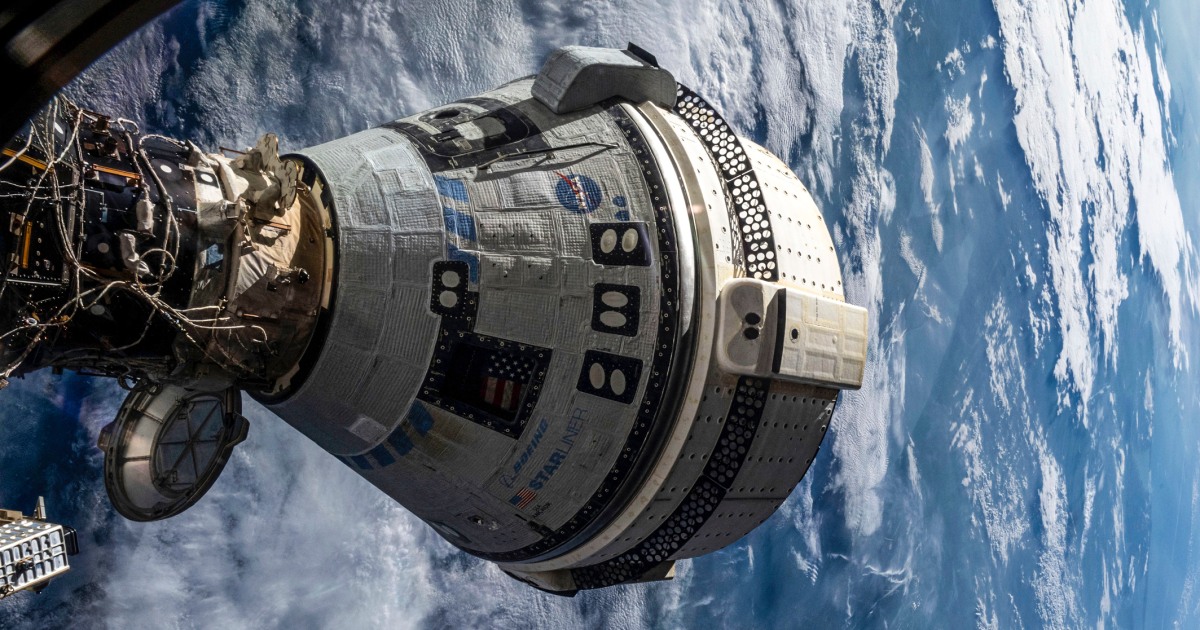

Boeing’s beleaguered spacecraft will attempt to undock from the International Space Station on Friday and return to Earth without any astronauts onboard, NASA announced on Wednesday.
The space agency said teams are on track for the uncrewed departure of the Starliner capsule, provided weather forecasts remain clear at its landing site in New Mexico. The journey back to Earth is expected to last around six hours, culminating in a landing at New Mexico’s White Sands Space Harbor in the early minutes of Saturday morning.
The return flight represents the final phase of a high-stakes test flight that did not go as planned. The mission — Starliner’s first crewed trip to space — was meant to prove that Boeing could reliably ferry astronauts to and from the space station, paving the way for NASA to certify it to do so. But after launching NASA astronauts Butch Wilmore and Suni Williams on June 5, problems cropped up with several of the spacecraft’s thrusters, and leaking helium was detected in its propulsion system.
The issues forced NASA to keep Starliner and the astronauts on the space station for months longer than expected as engineers on the ground scrambled to investigate the malfunctions. In the end, NASA decided that the Starliner capsule would fly back to Earth without anyone onboard, while Wilmore and Williams wait to hitch a ride home on a SpaceX capsule in February instead.
“I’m personally looking very forward to getting Starliner back,” Steve Stich, manager of NASA’s Commercial Crew Program, said Wednesday in a news briefing. “We’ve learned a lot on this test flight, but we’ll continue to learn more, I’m sure, through the undock and the de-orbit phase.”
Starliner is scheduled to depart the space station on Friday at around 6:04 p.m. ET, then touch down in New Mexico at 12:03 a.m. ET.
The undocking process will be slightly different than it would be with astronauts onboard, with the capsule moving up and away from the space station more quickly, according to Anthony Vareha, lead flight director for the Starliner’s undocking and return at NASA’s Johnson Space Center. The changes were made largely to protect the space station in case something goes wrong, and because astronauts will not be onboard to take manual control of the spacecraft, if necessary.
After it backs away from the orbiting outpost, Starliner’s engines will fire what’s known as a de-orbit burn to put it on a fiery path through Earth’s atmosphere. As it approaches the landing site in New Mexico, the capsule will deploy parachutes above and airbags underneath the spacecraft to cushion its landing.
For Boeing, a successful return of its Starliner capsule will likely be a bittersweet moment. If all goes smoothly, it may indicate that the NASA astronauts could have flown home safely on the spacecraft, even though the agency’s top officials voted unanimously to call on SpaceX for the return flight to minimize the risk of additional failures.
It’s unclear how the NASA certification process will play out now. Stich said NASA and Boeing are working together on modifications to the thrusters. Additional work will be carried out once the vehicle is back and engineers have had a chance to evaluate how it performed.
“All that’s going to start taking place, and there’s teams starting to look at what we do to get the vehicle fully certified in the future,” Stich said.
Boeing was one of two private companies awarded contracts under NASA’s Commercial Crew Program to build new space vehicles to take astronauts to low-Earth orbit after the agency’s space shuttles were retired. Rival company SpaceX developed its Crew Dragon spacecraft as part of the program and has been ferrying NASA astronauts to and from the space station since 2020.
 Print
Print


